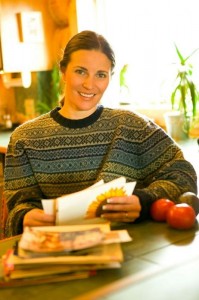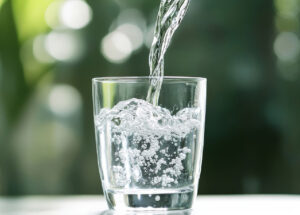Here’s an article from our Country Life Archives. Much of this information may be useful to missionaries living in remote areas. Enjoy!
Solar energy is perhaps the most versatile and the most developed of the alternative/renewable energy sources for the home. The available energy is on the order of GJ/yr, with the exact value depending on where you live. This discussion will break the topic down in three areas: passive solar heating/cooling, active solar heating, and photovoltaics.
Passive Solar Heating/Cooling
In some ways, this is the simplest of all alternative energies. It requires no maintenance, and has a lifetime equal to that of your house. In other ways it is the most difficult. Passive solar systems require architectural elements incorporated into the house. But, proper design of the house can provide heating, cooling and lighting.
Heating is achieved by gather the incident energy and then storing it and distributing it throughout the house. Apertures, such as a basic window, collect the radiant sunlight. The collected energy is reflected through the house by interior surfaces. It is further distributed as heat by radiation, by the air, and by the physical structure of the house, itself. It is stored by large mass elements like walls and floors made of brick, concrete or stone.
Heating systems are generally classified into two groups, direct and indirect gain systems. Direct gain systems utilize collectors to allow light directly into the house, where it is absorbed and converted into heat. Indirect gain systems create intermediate spaces, external to the house, where light is converted to heat, and then the heat is exchanged with the house via intermediate elements. Roof ponds, greenhouses, and Trombe walls are examples of this technique.
Cooling is in some ways merely the opposite of heating. It involves controlled, selected rejection of the incident energy by the collecting apertures. Thermal storage is minimized by heat transfer between storage elements and the ambient heat sinks in the building, such as windows providing ventilation.
Passive solar lighting may seem trivial, but in many non-residential buildings lighting often makes up a major portion of the energy costs. Lighting can be achieved by many of the same collector and monitor elements used for heating and cooling. Light selves and louvers in the building interior can be used to distribute the collected light. Laboratory demonstrations have shown the use of light guides and holographic films effective in improving day lighting.
These systems are usually achieved in conjunction with each other. The same collectors can be used for both heating and lighting. Insulation serves to both prevent heat loss in the winter and heat gain in the summer. Storage elements can be used by both heating and cooling elements. And day lighting reduces the need for interior lights, removing a heat source from the interior and thereby improving the cooling.
Active Solar Heating/Cooling
Active heating is similar to passive indirect gain systems in that collectors direct the light to an element which converts the light to heat external to the load. The difference arises in that in active systems, the heat is then pumped to the load.
Collectors transmit the light to an absorbing material. The collectors generally have a glaze, which is transparent to the light, but which prevents contact between the ambient air and the absorber. The absorbing material also has a glaze, which readily absorbs the incident visible light, but not infrared light. This damps re-radiation of the heat, minimizing thermal loss. The heat of the absorber is removed by a heat transfer fluid. This fluid is then actively pumped through the system to transfer the heat to a storage element or directly to the load.
Collectors can also be equipped with a parabolic concentrator to increase the incident light collection. They can be made stationary, or they can be made to track the seasonally position of the sun. Careful design of the system can yield annual efficiencies of 35-40%.
Photovoltaics
Photovoltaics utilize semiconductor technology to turn solar radiation directly into electricity. The photovoltaic effect was first observed in 1839 by a French physicist, Edmond Becquerel. Much research has been done on a number of different materials. Currently most cells are made of single-crystal or polycrystalline silicon. Efficiencies are typically 10-20%. Higher efficiencies are possible in GaAs materials; however the high cost and difficulty of its production have prevented it from becoming widespread.
Current in semiconductors is governed by the motion of charged carriers: electrons and holes (or the absence of an electron from an allowed state). A photocell basically consists of a p-n junction. A crystal is grown with p-type material, electrically neutral with an excess of electrons, in contact with an n-type material, electrically neutral with an excess of holes. Due to the spatial inhomogeneity of the carriers, the electrons and holes diffuse across the junction between the p-type and n-type materials. These carriers then set up an electric field, which causes the carriers to drift back across the junction. Eventually, an equilibrium is established. At the junction a neutral zone is established, void of carriers with a strong electric field. Light incident upon the junction can be absorbed, generating an electron-hole pair. The electric field in the junction causes the carriers to move away from the junction in opposite directions. This motion of carriers is the current generated by radiation.

































garden solar lighting…
When you are surfing for solar light news and info, be sure to tap into all of the sources available….
2007 things have changed a lot in the solar field.